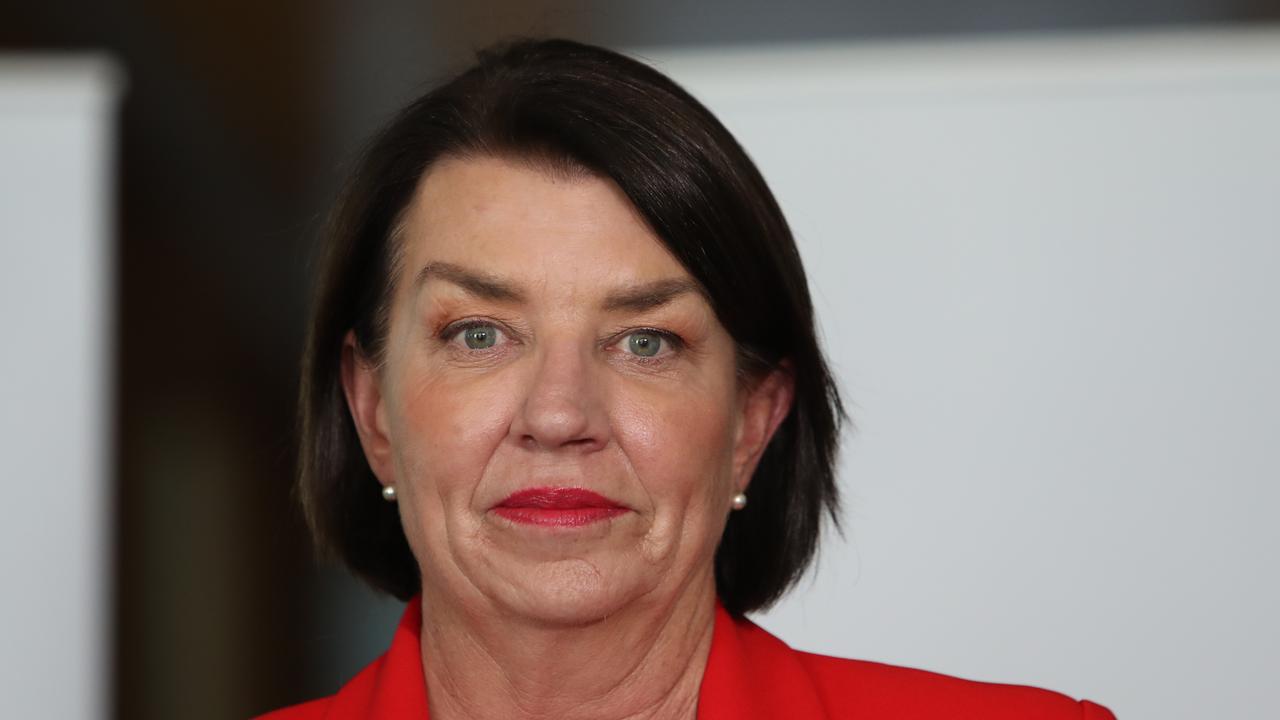AMP’s night of long knives, and sharp exits
AMP’s handling of the fees-for-no-service scandal has been akin to “putting a Band-Aid on a haemorrhaging wound’’.

As night fell outside AMP headquarters in Sydney, some in the crisis board meeting stole a glance at their watches, realising Sunday would likely roll into the start of a new working week before they could expect a reprieve.
The nine directors and assorted advisers had convened in the late afternoon, some in person and others by dial-in, to deliberate on the company’s fees-for-no-service scandal and resolve the fate of embattled chair Catherine Brenner.
However, progress in the 25th-floor boardroom was slow. Sure enough, it wasn’t until the early hours of yesterday that the succession plan was finally agreed — Brenner, the 47-year-old former investment banker and protegee of ANZ Bank chair David Gonski, would leave her high-profile post and hand over to ex-IAG chief executive Mike Wilkins.
Wilkins, who joined the AMP board in September 2016, had already been burdened with the role of acting chief executive after the AMP board met in crisis on April 19. Then-incumbent Craig Meller is now seeking a new business challenge.
AMP’s top internal lawyer, Brian Salter, was sent on leave at the same meeting. The AMP board, which clearly likes the cut of Salter’s jib as a fall guy, yesterday upgraded his leave pass to permanent. The former Clayton Utz partner is adamant he has “not engaged in any wrongdoing”, with the two sides so estranged that they can’t even agree if Salter learned of his fate yesterday from AMP’s official stock exchange announcement.
The 169-year-old company is showing a rare talent for spontaneous crisis generation.
As one veteran of crisis management says, AMP’s problem is that it implemented a specific business practice to charge clients fees for a 90-day period without providing the service. “It’s one thing charging fees because of poor systems or bad oversight, but it’s quite another to know about it and lie to the regulator — it’s unforgivable and I’ve never seen anything like it in 25 years,” he says. “To manage a crisis like that is like putting a Band-Aid on a haemorrhaging wound.”
AMP elevated its charging of fees for no service into a formal business practice that applied to clients moving between advisers. While it might seem like years ago, it was only on April 18 that advice boss Jack Regan acknowledged to the royal commission that AMP had misled the Australian Securities & Investments Commission more than 20 times in its reporting of the scandal. Regan also agreed that the company had workshopped about 25 drafts of an “independent” review of the debacle with Clayton Utz. Salter was a partner at the law firm before he joined AMP.
Last Friday, when senior counsel assisting Rowena Orr presented her closing submission on the $4.6 billion-a-year financial advice industry to royal commissioner Ken Hayne, she said it was open to him to find AMP had broken the law a number of times.
Given the many changes made to the Clayton Utz report, Orr argued AMP and its senior officers and employees knew it was “materially incorrect” to present the report to ASIC as independent. She said it was also open to Hayne to find that AMP’s culture and governance were to blame.
The main reason why Sunday’s board meeting continued into yesterday was it took so long to settle AMP’s two-page statement to the ASX.
The role of multiple parties had to be clarified, including the handover from Brenner to Wilkins and the positions of Salter and the board itself in relation to the Clayton Utz review. The outcome is that AMP’s directors, including Brenner, have drawn a line in the sand on any suggested legal exposure.
After taking advice from Melbourne commercial silk Philip Crutchfield and Tim Bednall of King & Wood Mallesons, the board said yesterday it was satisfied Brenner, Meller and the other directors “did not act inappropriately” in relation to the report. While AMP will make a formal submission to the royal commission by Friday in response to Orr’s submissions, it’s abundantly clear Hayne will be presiding over a battle-by-submission between Orr and Crutchfield.
Brenner’s contribution to yesterday’s AMP statement was illuminating. Starting with the expected “deep concern” about the impact of the scandal on customers, employees, advisers and shareholders, she turned to her personal position. “I have always sought to act in the best interests of the company and have been in discussions with the board about the most appropriate course of action, including my resignation,” she said. “The board has now accepted my resignation as chairman as a step towards restoring the trust and confidence in AMP.”
Brenner’s reputation has been smashed but there is a clear subtext to her parting words, with the former chairman keen to dispel reports that she did everything in her power to keep her position.
Instead, her message is that she was always prepared to go, but only when it was best for AMP.
Brenner has her other directorships at Boral and Coca-Cola Amatil to worry about.






To join the conversation, please log in. Don't have an account? Register
Join the conversation, you are commenting as Logout